Ohio Spiderworts wake me up when I look out the window. Although only a few flowers are open at a time, the bright golden anthers play against their color-opposite purple petals. My eyes shimmer.
It’s a morning-only vision. Around noon the flowers close up tight. As if to say, "Come back tomorrow." For the rest of the day, spiderworts are simply green, easy to overlook.
But next sunrise, a fresh crop of purple-petaled blossoms opens. From the center of each flower, slender columns reach up. These are the reproductive parts of the flowers.
Six of the columns are stamens, with bright yellow pollen packets (called anthers) at their tops. These are the flower’s male parts.
The one other column, coming from the very center of the flower, is the pistil, the flower’s female part. Its tip is sticky, to hold pollen when an insect delivers some there.
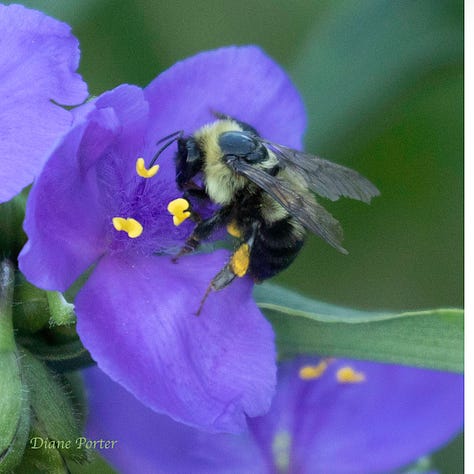
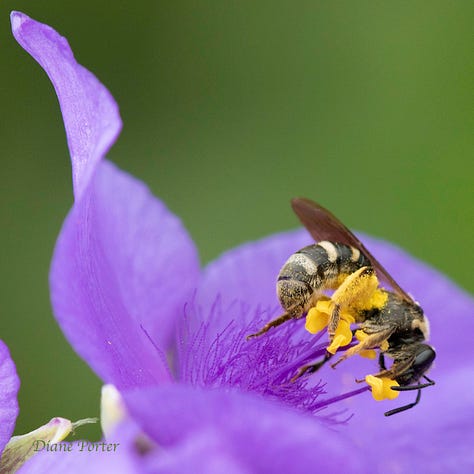
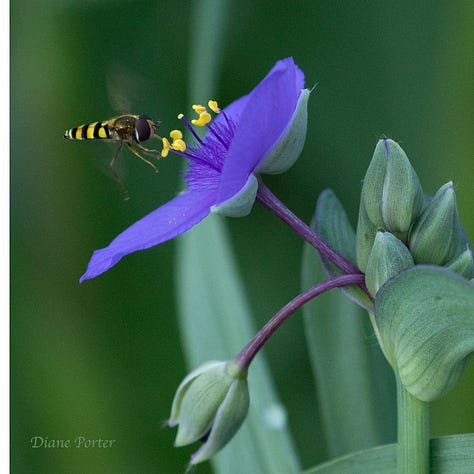
Many species of native bees and other insects visit Ohio Spiderworts to collect pollen as food. In the process, they pollinate the flowers.
There is still more going on in the heart of this flower.
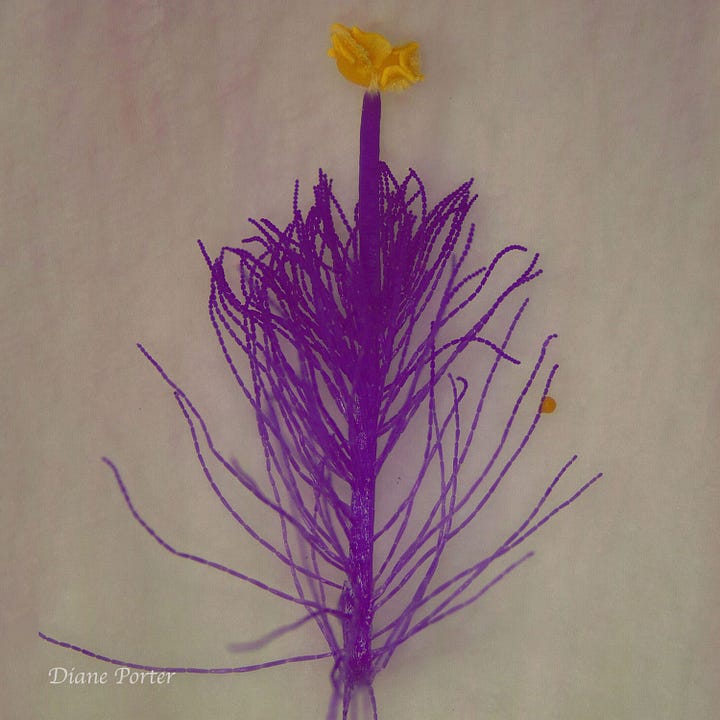
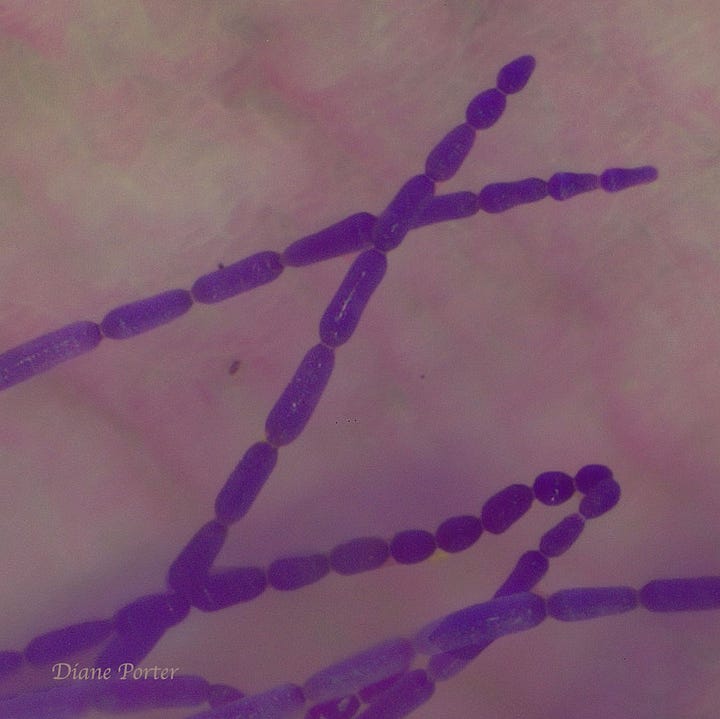
Very fine hairs branch off from the stamens, appearing as fuzz at the center of the blossom. Looked at under a magnifying glass, the hairs resemble strings of rather nice purple beads. Each bead is actually a single cell.
Botanists are not completely settled on the function of the hairs. Some evidence indicates that Ohio Spiderwort’s hairs may slow pollinators down and make them spend more time bumping into the stamens and pistils, resulting in more pollination.
Or maybe the flower knows something we do not.
Ohio Spiderwort is one of the iconic wildflowers North American prairies. It has lived in eastern North America for many thousands of years. Now it often grows along rural gravel roads, sometimes concealed under traffic dust and weeds.
If you see them in a prairie, or you grow them in a garden, they reveal their beauty.
Range
Ohio Spiderwort is native to the US, primarily in the Midwest and the eastern states.
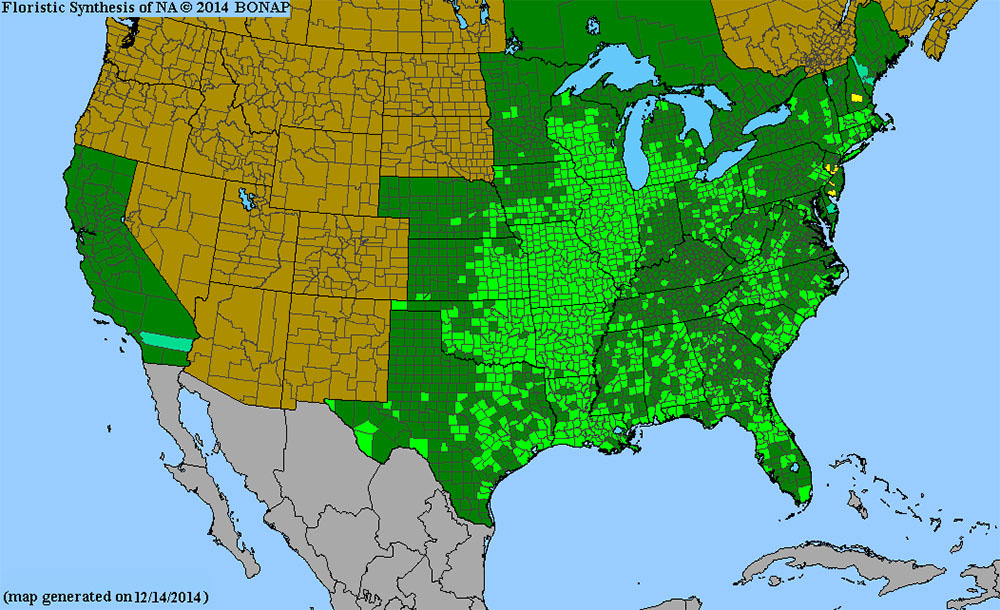
Names
Plant family: Spiderwort family (Commelinaceae)
Scientific name: Tradescantia ohiensis
Common name: Ohio Spiderwort
“Spider” refers to the long, pointed leaves (like a spider’s legs), or perhaps to the threads that string out like spiderweb silk between ends of a stem freshly broken.
“Wort” comes from “wyrt,” an Old English word for plant.
Not everyone likes spiders. And no one likes warts. Makes you wonder what the botanist who came up with “spiderwort” named their kids.




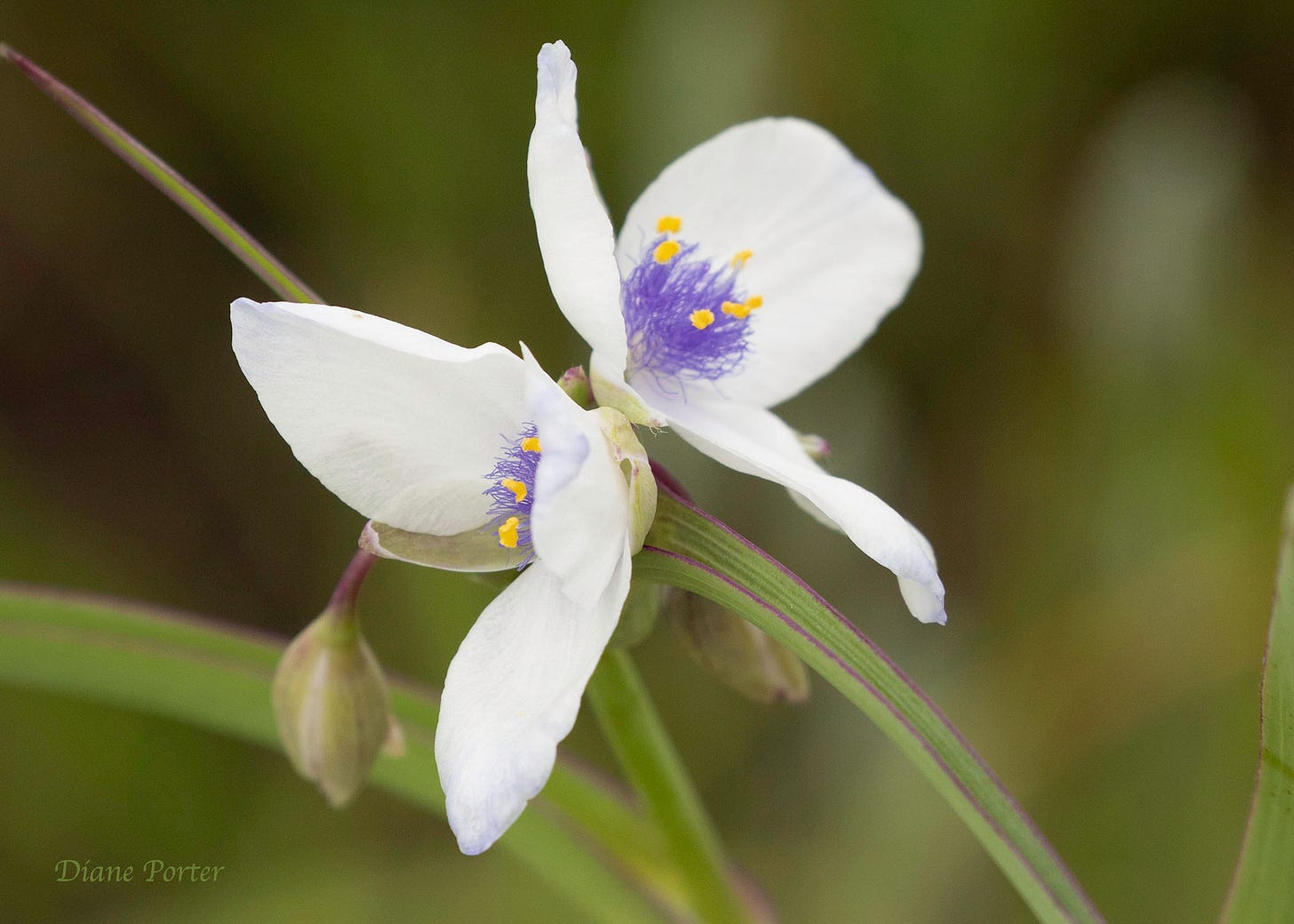

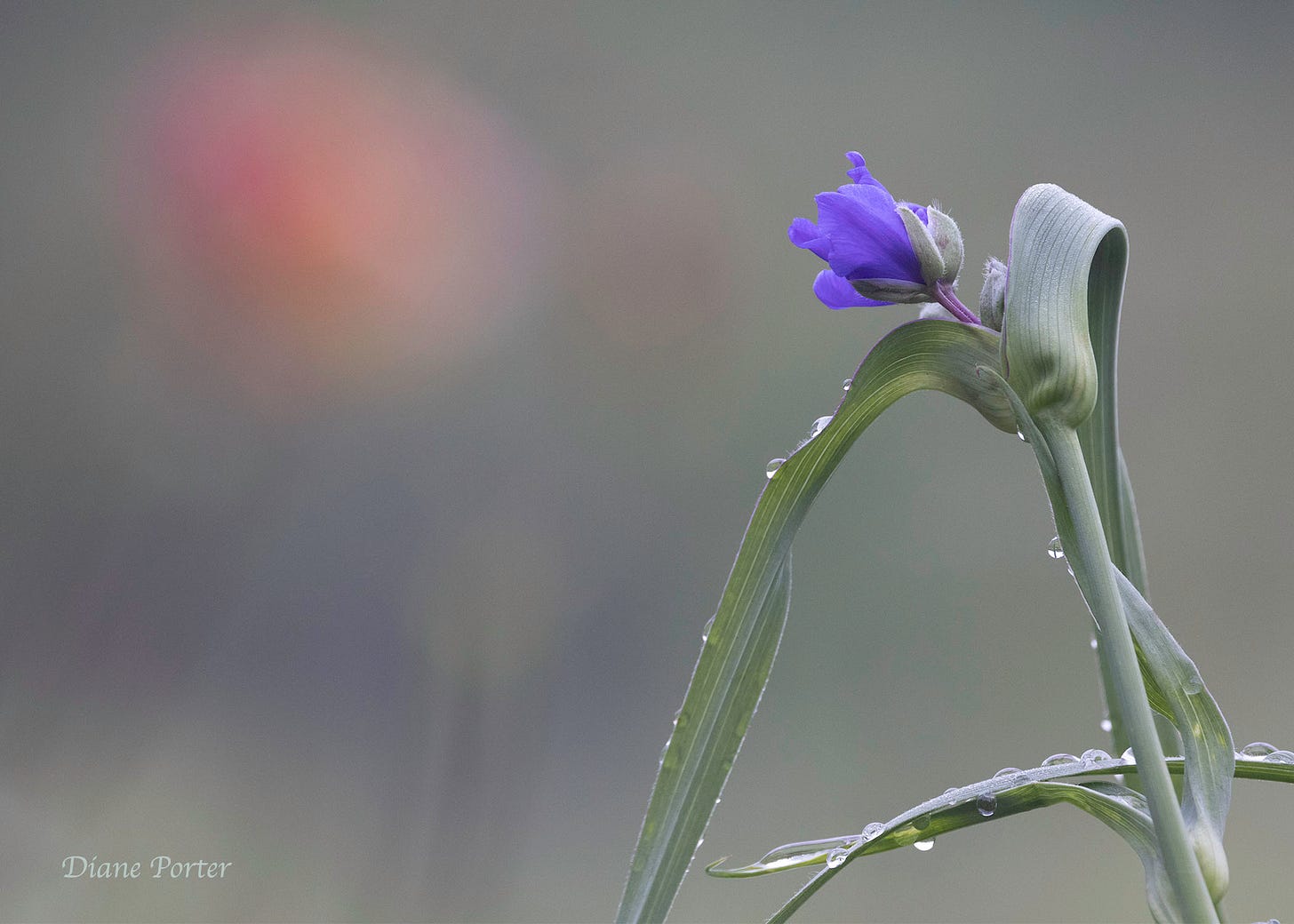
Care Connet has given permission for her emailed comment to appear here. It is:
Lovely photos and descriptions, especially the magnified images of the purple cells strung like beads. Nice to know they are found in our area. My Spiderworts are more lavender blue.
I have published your post--thank you!
https://www.bleedingheartland.com/2024/05/22/iowa-wildflower-wednesday-ohio-spiderwort/